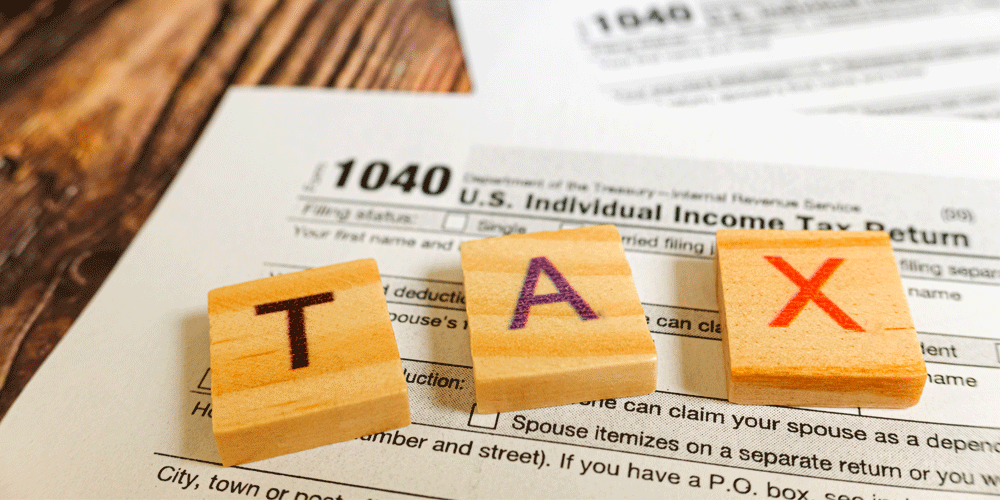How to Read Your Truck Driver Settlements [Pay Settlements Explained]
Samantha joined the Anderson Trucking Family in November of 2012 as a specialized driver manager and managed a fleet of mixed company and contractor drivers. In the spring of 2014, she transitioned to the driver administration department and began working in contractor services. While in contractor services, Samantha familiarized herself with all processes, procedures and information in regards to driver contracts, pay and settlements. She is currently the operations support manager and oversees both the contractor services department as well as the driver settlement department and leads both of her teams to ensure our drivers receive the highest level of service required to help navigate their accounts and settlements on a daily basis.
Where is my money?
Why isn’t this load included in my check?
What does this deduction mean?
Why is my net amount zero dollars?
What does this section mean?
These are some of the most common questions we get from drivers when they receive their settlement checks.
When you’re working hard out on the road, you want to make sure you’re getting paid what you deserve. It can be pretty frustrating if you don’t understand your settlements or if it appears you’re not taking home as much money as you should. The last thing you want is an error on your settlement.
Here at Anderson Trucking Service (ATS), we aim to make sure you understand every line of your settlement so that you can plan your finances accordingly.
In this article, you’ll learn:
- General settlement terms
- Why settlement checks look different at every company
- What you can expect from ATS settlement checks
Common Driver Settlement Phrases
Let’s start with a vocabulary lesson.
Every company will typically have its own variation on the terms they use, but below are some of the most common phrases that are used in the settlement world.
Keep in mind your pay settlement won’t look the same at every company you work for. That’s because each company not only does things a little bit differently and may pay differently, but also because they use different financial software. This software allows companies to customize what their settlements include and how they’re set up.
Depending on the company you work for, you may receive only electronic statements or you may elect to receive physical statements mailed to you. Make sure you understand how you can access your settlement.
Okay, now that you have your settlement in hand, let’s review some common terms.
Earnings
Your earnings will always be listed on your settlements and they can be shown as net earnings or gross earnings.
Gross earnings are your earnings before any percentages or items are deducted. For instance, gross earnings don’t have taxes, insurance costs, truck payments or maintenance account funds taken out yet.
Gross earnings are not necessarily what you’ll take home, but for the sake of transparency, some companies will list your gross earnings and show what the carrier could bill the load out for. Carriers show you what they billed for the load and your gross earnings so you can follow along with their math and see how your percentage pay or cents-per-mile (CPM) was calculated.
If you’re a company driver, you’ll have tax deductions. As a lease driver, you won’t have taxes taken out but you’ll have things like truck payments, maintenance funds and truck insurance costs taken out.
Net earnings are the earnings you take home after all deductions are made.
Deductions
Deductions are taken out of your settlement to pay for different items. They’re split into two categories: fixed deductions and variable deductions.
Fixed deductions are deductions that are the same every time you receive a settlement; they don’t change. Fixed deductions include things like your truck payment and truck insurance.
Variable deductions will change settlement to settlement. Examples of variable deductions include fuel expenses or maintenance deductions. For instance, some carriers require you to set aside a specific amount of money in your maintenance account for every mile you drive. Therefore this deduction will change week to week as you drive varying distances each week.

Advances
An advance occurs when a driver takes their money in advance of when they’d normally receive it. They may need their pay sooner to help pay for load-related expenses or to take care of personal expenses.
Companies work with different financial companies, so you may hear an advance referred to as an EFS code (electronic fund services) or a T-Chek.
If you didn't take out any advances, your settlement will show a zero in this category.
Reimbursements
Reimbursements are items that you as a driver are entitled to be refunded for because they aren’t your responsibility. For instance, lumper fees or loading and unloading fees may be subject to reimbursement depending on the carrier you work for.
You may have to pay these fees in advance and then your company will reimburse you in a future settlement.
Load Details
Your settlement should provide load details, including your load number, your mileage and the city and states you traveled to and from.
Each load you hauled within the pay period should be listed on your settlement. However, if you didn’t turn in the proper paperwork for loads you hauled, you won’t be paid until your next settlement (or until you turn in the paperwork).
Depending on which company you work for and the financial software they use, you may or may not see the gross and net earnings on each load. The load details could be very thorough or very brief.
Promissory Notes
If you ever end up in arrears (meaning you owe the trucking company money), you may have a promissory note on your settlement. A promissory note is a legal agreement for one party to pay another.
You may be in arrears for several reasons, including load-related items, citations or personal equipment. As a lease driver, you may owe back payments on your truck or your truck insurance.
This will show up on your settlement as repayment and it’ll show up differently depending on the company you drive for. You may see it as a negative number or it can show up as an open/pending deduction.
Understanding ATS Driver Settlements
The ATS settlement has seven sections.
Section one is a high-level settlement recap. This is for drivers who just want to quickly glance at their settlement to see what’s been deposited in their bank account. It will also show how much you’re taking home on average per mile for this settlement period so you can see if it’s in a range you’re satisfied with. Each settlement will show this so you can see how it might change over time and how you might need to adjust to get that number to go up.
Section two includes more settlement details and deductions. It’s an overview of your settlement and the start of your deductions details. We start to take everything that’s involved in your earnings and we break them out at a smaller level. For example, if you only have two loads on your settlement, it’ll summarize those two loads, the earnings associated with them and how much was deducted from that load. These totals will match the totals in section one.
Section three includes an even more in-depth breakdown of load details. Information from sections one and two will be included, along with additional earnings/accessorials, fuel costs and route and delivery details. It’ll show the fuel you pumped under each load, how many miles you drove for each load and where you went.
Section four goes into your deductions. It places them into two separate categories. This allows ATS drivers to separate how much it costs to run your truck (including truck payments and truck insurance) versus the cost of doing business, like the fees for a tax service.
Section five details all your open/pending loads. This could range from any loads you haven’t been paid for yet because it didn’t make the settlement cutoff date, a load you’re in the middle of hauling or a load that’s been delivered but the paperwork hasn’t been turned in yet.
Section six is pending/not taken. This is really where deductions come into play. If you’re in arrears, you’ll see it here.
Let’s use an example.
Let’s say a driver makes $1,000 on one settlement, but this isn’t enough to cover all their deductions, which total $1,300. Their deductions include their truck payment, all of the fuel, maintenance funds and insurance costs. We would take everything up to the $1,000 and then whatever that driver still owes — in this case, $300 — would show up in this section.
The driver would receive $0 on their settlement and the pending/not taken section would show $300.
Many companies have a priority rankings system that they follow when taking deductions. For instance, if you owe your trucking company $1,300 for your deductions one week, they’ll first deduct your fuel used, then any advances you may have taken, then your truck payment. If you didn’t make $1,300, you’ll still owe the company for whatever the lowest priority was. In this example, it was the truck payment.
Make sure you understand what priority rankings system your company follows.
Section seven (the final section) is a settlement summary with a year-to-date breakdown of miles, earnings, deductions, reimbursements and disbursements. It also includes current maintenance and reserve account balances.
This is a really great tool because it shows you what you’ve earned up until this point in the year. It’s a great way to keep track of your earnings for tax purposes, too. After each quarter passes, your settlement will include a summary of the previous quarter instead of including a rundown of 13 settlements from the previous quarter. Instead of giving your tax preparer 52 settlements, you only have to give them four — the final settlement from each quarter.

Who Can Help Me Understand My Driver Settlements?
If you don’t understand your pay settlement, reach out to your dispatcher first. Your dispatcher is going to know what loads you hauled, what loads you’re being settled for and what loads are pending. If your dispatcher needs assistance, the settlement department or the driver pay department should be able to assist.
It’s always in your best interest to call your carrier for assistance. Be in a safe area where you can pull out your settlement and talk through it. The person on the other side of the phone more likely than not will want you to pull up your settlement so they can teach you what your settlement means and you can follow along.
We hear from drivers who are confused about why they didn’t get paid for a specific load yet or drivers wondering when they need to turn in their paperwork. Your company should always be able to assist you with having a smoother settlement process so you can get settled on time. Companies also often give out paperwork at orientation that details what their settlements look like and mean.
Understand How You’ll Get Paid
Settlements can be a little confusing, especially if you’ve worked at a few trucking companies and they all do things a little bit differently. Companies use different financial software and each has a preference as to how they want their settlements to look and function.
In general, most companies will use similar terms but the information may be laid out differently. One company may provide more details on your settlement than another. If you’re ever confused, you should feel comfortable calling your dispatcher for assistance or talking to someone in the pay department.
It’s important to be able to read your settlements and it’s just as important to understand how you’re getting paid. Learn more about these seven ways you can get paid.
If you’re looking for a top-paying carrier, check out our list of the best-paying trucking companies in the industry right now.
![How to Read Your Truck Driver Settlements [Pay Settlements Explained]](https://blog.drive4ats.com/hubfs/Images/Blog/Settlements/IncomeInGreenfeatured.png)
